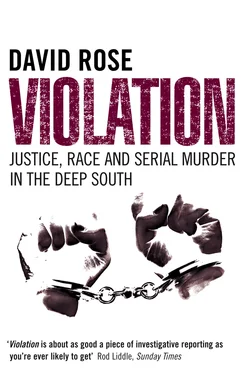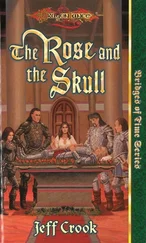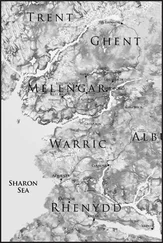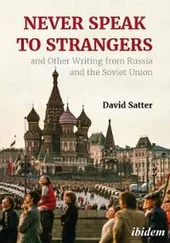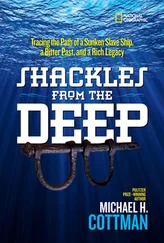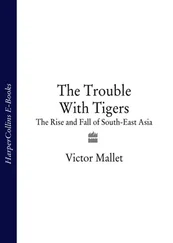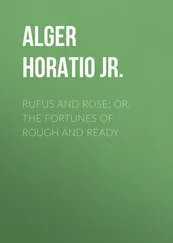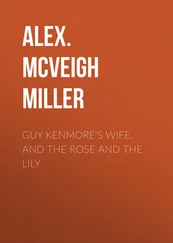Georgia’s Ordinance of Secession passed the State Constitutional Convention on 21 January 1861, to be greeted in Columbus with a mass meeting of citizens, another torchlight procession, and the firing of cannon salutes. The common people shared the zeal of the small, slave-owning elite. The State Governor, Joe Brown, was warning them that if Lincoln were to free the slaves, blacks would compete for jobs with poor whites, ‘associate with them and their children as equals, be allowed to testify in court against them, sit on juries with them, march to the ballot box by their sides … and ask the hands of their children in marriage’. (Georgia’s laws against miscegenation were not struck down by the US Supreme Court until 1967.) In the first months of the war that began that April, Columbus sent eighteen companies to the front – 1,200 men, more than a fifth of its pre-war white population.
The war both blasted and, at least for a time, enriched Columbus. One family, that of the pioneering entrepreneur Colonel John Banks, whose seventh- and eighth-generation descendants were still occupying the magnificent Wynnton mansion known as The Cedars in 2006, lost three sons. As they fought what increasing numbers came to perceive as a ‘rich man’s war’, ordinary Confederate soldiers not only died in combat, but fell prey in vast numbers to malnourishment, cold and disease. N.L. Atkinson, who lived on the Alabama side of the Chattahoochee, wrote in a letter to his wife, ‘this inhuman war is putting our whole country in mourning’. But while its youth fought and fell at Gettysburg, Antietam and Manassas, Columbus’s industry boomed. By 1862, the Eagle textile mill was running non-stop, and producing two thousand yards of worsted for uniforms each day, as well as cotton cloth for tents, thread, rope and rubberised fabric. The city’s ironworks rapidly expanded, to become the Confederacy’s second-largest source of swords, pistols, bayonets, artillery pieces, steam engines, boilers and ammunition. The newly established Confederate Navy Yard made a gunboat 250 feet in length.
Of the industrial quarter that was the scene of this feverish activity, not a trace remains. As the war reached its closing stages, the Union’s Major General James Harrison Wilson was ordered to sap the Confederacy’s resistance by striking at its last centres of manufacturing. Having dealt with the cities of Selma and Montgomery in Alabama, his force of thirteen thousand reached the west bank of the Chattahoochee on 16 April 1865 – a week after Lee’s surrender at Appomattox. Neither Wilson nor the ragtag of militia units defending Columbus had received this news; they were likewise unaware that Lincoln had been murdered on 14 April. After a short battle on the Alabama shore, the Yankees swarmed across the Fourteenth Street bridge and took the city that Wilson had called ‘the door to Georgia’ in just over an hour. Next day, Wilson ordered that ‘everything within reach that could be made useful for the continuance of the rebellion’ must be destroyed. Mills, foundries, warehouses and military stockpiles were put to the torch, together with three gunboats, which drifted for miles down the river in flames. While the Union army went about its work, civilian mobs looted stores and small businesses. Even respectable, well-dressed women were said by one witness to have participated: ‘They frantically join and jostle in the chaos, and seem crazy for plunder.’ As Wilson moved on towards Macon on 18 April, leaving only a small garrison, Columbus was ‘a mass of flame and coals’.
For many years, Columbus’s business and political elites have gently looked down on their counterparts in the parvenu state capital to the north, Atlanta, which was still a featureless rural tract when Columbus was building its grid of downtown streets. Perhaps their superior attitude stems in part from their ancestors’ differing response to Yankee-inflicted devastation. While Atlanta complained about its treatment at the hands of General William Tecumseh Sherman during his notorious march to the sea, Columbus got on with building new factories. Most of the imposing red-brick buildings downtown date from the late 1860s and seventies. One of them is built on the site of its predecessor, the Eagle mill. Above its mullioned arches, a banner in brickwork picks out the legend ‘Eagle and Phenix’. Within a month of Wilson’s fire, the iron foundries were open again for business. Louis Halman, formerly the proprietor of a sword works, retooled his charred and shattered premises and began, symbolically enough, to manufacture ploughs.
Impressive as this physical rebuilding was, in the period after the South’s defeat, Columbus also engaged in a process of psychic reconstruction. In common with other communities whose long-term material suffering was much more severe, an important part of the city’s attempt to come to terms with its role in America’s bloodiest war was its adoption of a narrative myth – the legend of the Lost Cause. On the one hand, this was a way of making the past seem acceptable. At the same time, it contained the ideological seeds for the region’s defining social characteristic far into the twentieth century – white supremacy.
There is a line in William Faulkner’s play Requiem for a Nun which has become a cliché in writing about the South: ‘The past is never dead. It’s not even past.’ Faulkner meant it to apply to the enduring consequences of an individual’s actions, not the influence of history – and in any case, the past affects the present in regions other than the states of the former Confederacy. But ultimately the past doesn’t die because it is remembered, and memory, as historians have recently begun to understand, is a potent influence on contemporary events, an analysis that seems especially true of the American Civil War. ‘Americans have needed deflections from the deeper meanings of the Civil War. It haunts us still; we feel it, but often do not face it,’ writes the Amherst professor David Blight. Instead of a titanic struggle over principle, America preferred to remember the war through ‘pathos and the endearing mutuality of sacrifice among soldiers’, so that ‘romance triumphed over reality’. The consequence, Blight concludes, has been ‘the denigration of black dignity and the attempted erasure of emancipation from the national narrative’.
In the Lost Cause account of the Civil War, partially created and vividly expressed in Columbus, slavery, racial oppression and the struggle against them have all but disappeared. The Confederate soldiers’ courage and independence were to be celebrated, but not the realities of the ‘peculiar institution’ – slavery – they had happened to be defending. If slavery were to be mentioned at all, it was to be as something decent and necessary, grounded in mutual respect.
Histories of Columbus by authors from the city are steeped in the different aspects of this myth. For Nancy Telfair, a local journalist whose History of Columbus, Georgia was published in 1928 and recently reissued, the only principles involved in secession and the war were ‘states’ rights’ to determine whether or not to permit slavery, and the prerogative of owners ‘to assert their rights to equality and the protection of their property’. It simply did not occur to her that the fact that this property happened to consist of human beings made it different from bales of cotton or farmland. According to Telfair (her real name was Louise Jones DuBose), slavery was merely ‘a characteristically Southern industry’ destroyed by the war.
Etta Blanchard Worsley’s Columbus on the Chattahoochee was published in 1951, at an early stage of the modern civil rights era, when Georgia’s African-Americans were fighting in court for the right to vote and other basic liberties. Like Telfair’s, her book was published by the Columbus Supply Company, and taught in the city’s schools. Both works can still be found on the shelves of Columbus’s libraries. The Reverend Joseph Wilson, father of the US President Woodrow Wilson, had argued that bondage was an ‘ameliorative’ institution, which could improve the spiritual welfare of slaveholders and slaves alike. Echoing his logic, Worsley characterises slavery as ‘part of the evolutionary process of the civilisation of the African tribes’. There might, she adds, have been isolated examples of abuse by ‘low-class overseers’. In general, however, ‘there had been the kindliest feelings between the whites and the Negroes … the tie that bound the slave to the master with whom he was closely associated was one less of law than of mutual need, confidence and respect’. As for abolition, it was but a ‘fanatical demand’ orchestrated mainly by Northern Quakers, peddled by means of ‘inflaming editorials’, and ‘little did it help for the South to plead for conciliation. The agitation went on for forty years.’
Читать дальше
